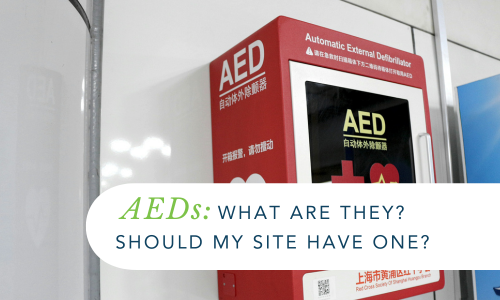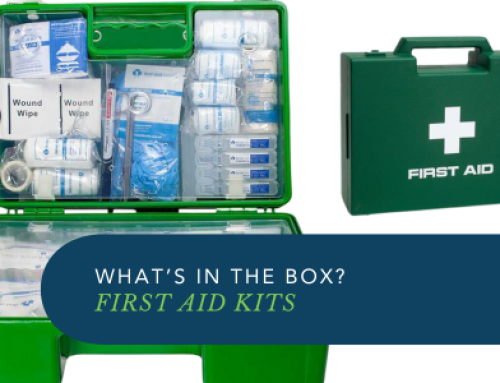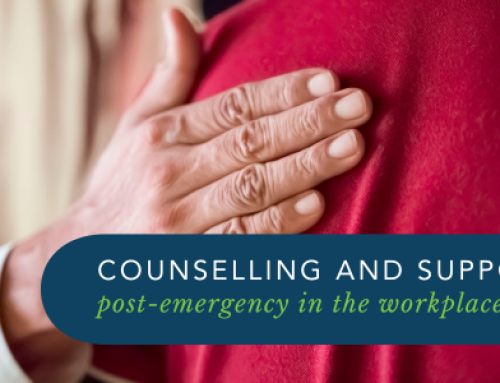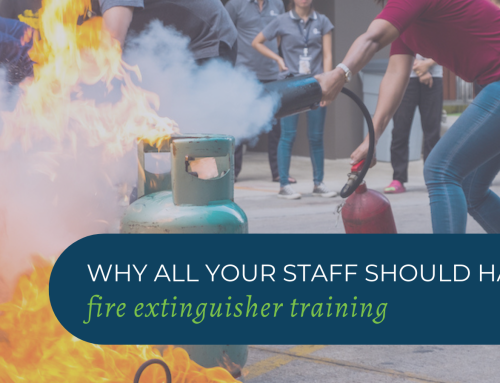An AED – also known as an Automated External Defibrillator, is a portable life-saving device that will auto-detect and treat life-threatening cardiac arrhythmias.
I’m sure while watching our favorite medical drama we’ve seen someone yell “Clear!” and shock a patient on their chest when their heart stops beating. As exciting as these machines may make some scenes, these are not just devices made up for TV drama. An AED is a real-life-saving device that can help someone who’s had a sudden cardiac arrest.
When to use AEDs
It is super important to know when the appropriate time is to use an AED. Using an automatic external defibrillator can save a life but if used when it is not necessary it can put one’s life in danger.
You should grab the device if the person’s heart suddenly stops beating. They may be unresponsive, unconscious, and have no pulse meaning they are most likely suffering from Sudden Cardiac Arrest. If you are to find someone in this state it is important to call or get someone to call 000 and start CPR.
You shouldn’t use an AED if the person is unconscious but is breathing normally, the AED is faulty or if the person has indications of DNR (do not resuscitate), like a tattoo or a bracelet or from an advanced care plan (ACP). It is also important to note not to use an AED on someone who is submerged in water. Move the person to a dry location and quickly pat dry before using AED. Also, do not use a defibrillator with free flowing oxygen being supplied to the area where the AED is being used.
How to use an AED
Call 000. The moment you see someone having a medical episode make that call or direct someone to do so.
Check the person. The first check to do is to determine if they are breathing. Put your ear to their chest to listen for breaths. The second check is to make sure the person’s airway is clear.
Start CPR. Begin CPR by giving 30 chest compressions at a depth of one-third (1/3) of the chest thickness and then give 2 breaths.
Locate an AED. Get a person close by to locate and bring you an AED.
Use Defibrillator. Turn on the AED and make sure the Pads are connected to the device. Place pads on the person’s chest using the diagram to determine where to put them. Follow the voice prompts while the AED analyses the person’s heart rhythm and only “shock” if the AED device tells you to do so. Continue to perform CPR until the person regains consciousness or until emergency services arrive while continuing to listen for any other prompts from the AED device.
Why your site should have an AED
Cardiac arrest can happen to anyone at any time and is very scary. In Australia, cardiovascular disease takes a life every twelve minutes and accounts for one in four deaths. The simple reason why you may consider having one on your site is because they save lives! Using an AED is an essential link in the ‘Chain of Survival’, in a First Aid response. For every minute that passes without a defibrillator in use, the chance of survival decreases by 10%. Time is so valuable during medical emergencies and imagine how much time you will save grabbing an AED that’s on-site compared to having to run out and find one in a panic.
South Australia has also passed the Automated External Defibrillators (Public Access) Act 2022. This requires the installation of AEDs in all public buildings, including schools, universities, libraries, sporting facilities, local council offices, and privately owned buildings such as shopping centers, aged care, retirement villages, and commercial properties over 600 square meters. So, if you are a South Australian business we’d recommend looking into this bill and seeing what this means for your company.
CPR and Defibrillator training are part of a holistic First Aid Training program, which Workplace Emergency Management offers to companies and individuals across Australia. Get in touch to organise your next workplace first aid training session.
GET IN TOUCH
Are you ready for peace of mind that your workforce is as safe and prepared as possible?
With a dedicated team of staff ready to help you meet compliance requirements and improve the overall safety of your workplace, all you need to do is get in touch.
Request your free audit today!



